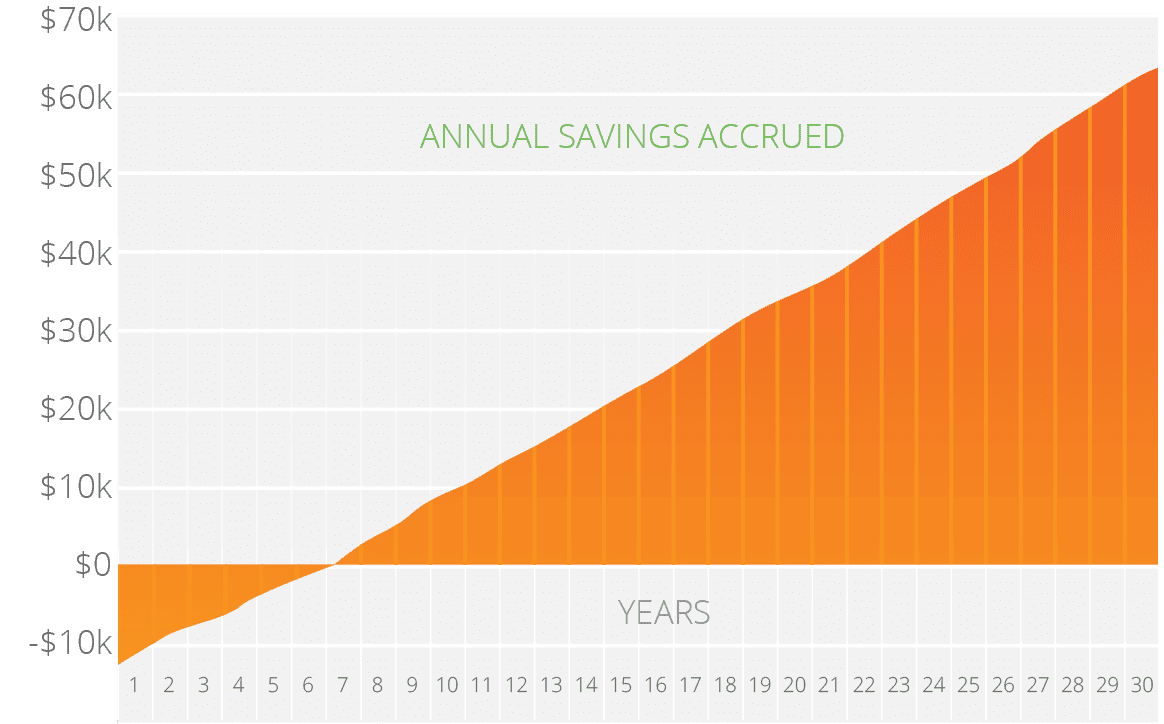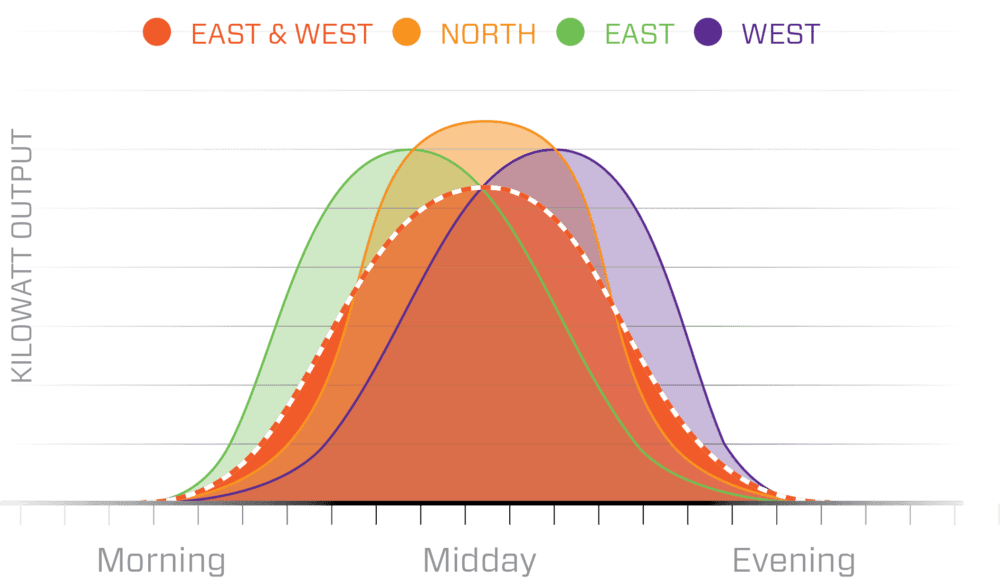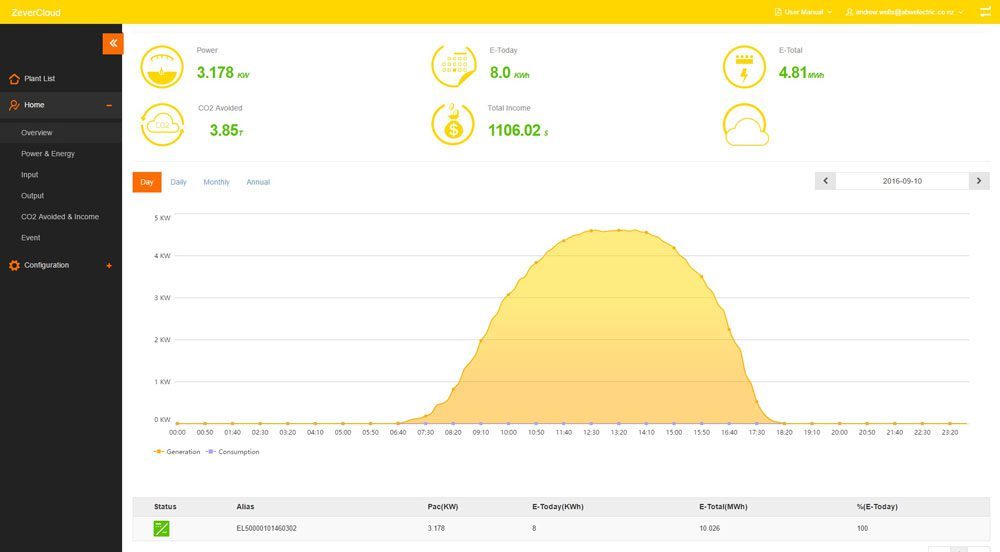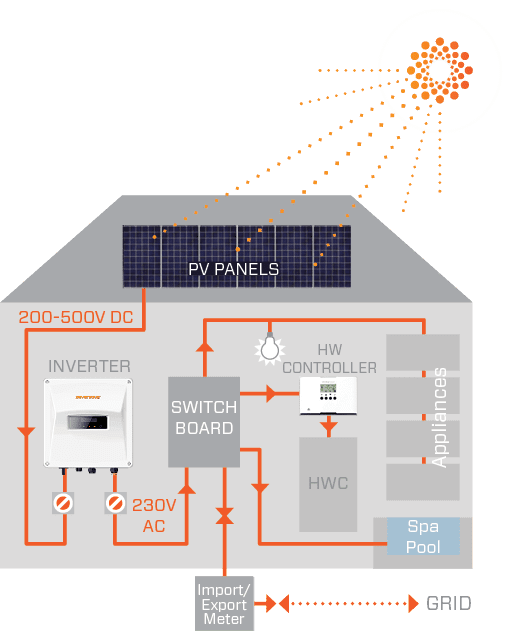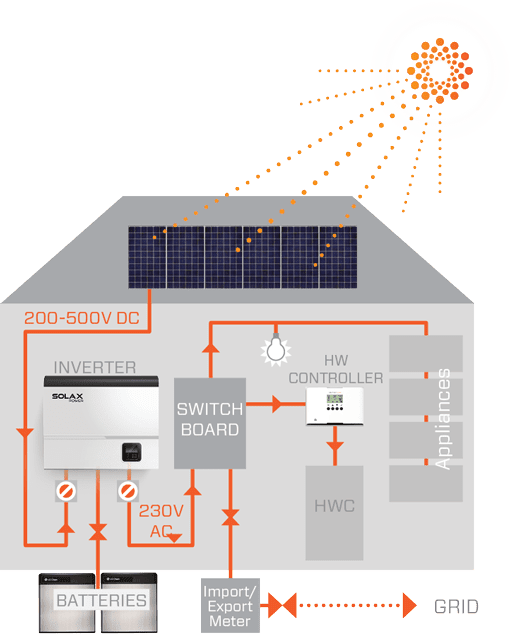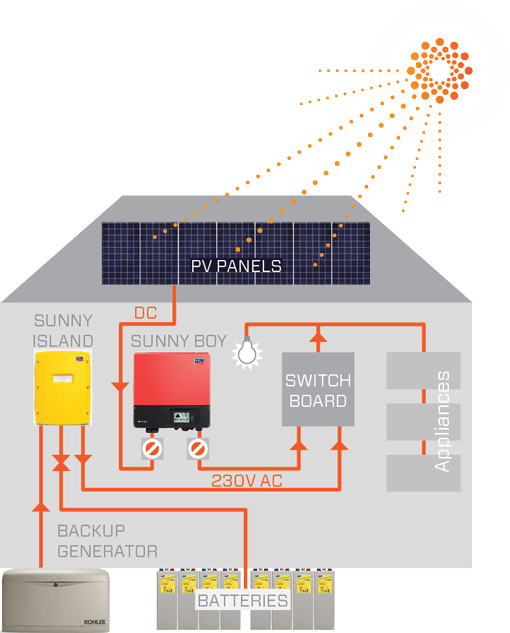How Solar works
How solar PV panels work
Solar panels are made up of cells, with two layers of silicon – one positively charged and one negatively charged. Light causes the electrons to move between the layers, making a current which is captured by contact grids.
- The colder it is – the better solar panels work!
- NZ has one of the highest efficiencies for solar panel capture—w/m2
- Solar panels can be used for any electrical load
This gives solar panels (PV) great versatility and efficiency as a choice for power generation. Energy from the sun is captured with a very high efficiency ratio and can be used or stored for a wide variety of applications.
Optimising solar capture
Power produced by solar panels is not constant – it rises and falls with the sun and is greater in summer than in winter. Our computer technology assists in optimising the best array angles and positions for shade evasion, seasonal considerations and compensation.
A cost effective method of increasing solar panel production is over-subscription – installing more solar panels than the inverters output capacity. The extra generating capacity reaches the inverters maximum output earlier and remains at maximum for longer through the day. The result is more power gained in the morning and afternoon than potential lost during midday peak. Your system costs less because we use a smaller inverter.
Different kinds of solar systems
There are different kinds of solar panel power systems, each designed to suit different situations and different requirements.
The three main configurations are GRID-TIED, HYBRID and OFF-GRID. Within each of these, there are many variables, which Sunergy Solar configure as a custom installation particular to your site and needs.
GRID-TIED
Where you rely on the grid for when the solar panels are not producing, i.e. at night.
Power from the panels is used during the day when they are generating, in priority over grid power. If there is not enough power generating from the solar panels, electricity from the grid is used to subsidise the load required.
Surplus electricity from the panels is not stored, but is directed back into the grid.
HYBRID
Hybrid systems are like the grid-tied system, but with the addition of batteries to store excess energy from your solar system for use in the evenings, with the grid as your backup.
This also allows for some emergency loads to be run in an off-grid way from solar and batteries during a power cut – like your lights and fridge.
Additional components are used to manage power.
OFF-GRID
An off-grid system has no connection to the electrical grid, and is the sole source of power.
A battery bank and backup generator are used in addition to the solar panels. Surplus electricity generated during the day is stored in the battery bank for use when panels are not generating—ie at night.
Off-grid houses require a more energy conscious design for water heating and space heating and are most common where connecting to the grid is cost prohibitive.
Excellent Return On Investment
from 5 Year Payback*
*Sunergy Solar installations often generate enough return on investment to pay for themselves within as little as 5 years.
Ask us what return you could expect from your site!
As well as generating energy, solar power can effectively generate income—as a return on your investment through savings on power bills, as well as any income from surplus export to the grid. These savings effectively pay for the system within a relatively short time. After that—FREE power! An effectively very good return of profit in the form of ongoing savings.
We give you an expected ROI by analysing your site, using NIWA’s historical sunshine data, and current energy prices.
These graphs show an expected return and payback projection based on a 4.16kW system, saving $0.30c per kWh of grid supply.
The sooner you go solar, the greater the return ~ so why hold off on a good investment?
With the solar technology available today, it has become economically viable—and even profitable—to install solar power for many businesses, farms, schools and homes.
Solar Photo Voltaic (PV) systems are cost effective, easy to install and do not require resource or building consent, making them the clear contender for domestic and commercial auxiliary energy production both now and in the future.
Still have questions? Give us a call!


